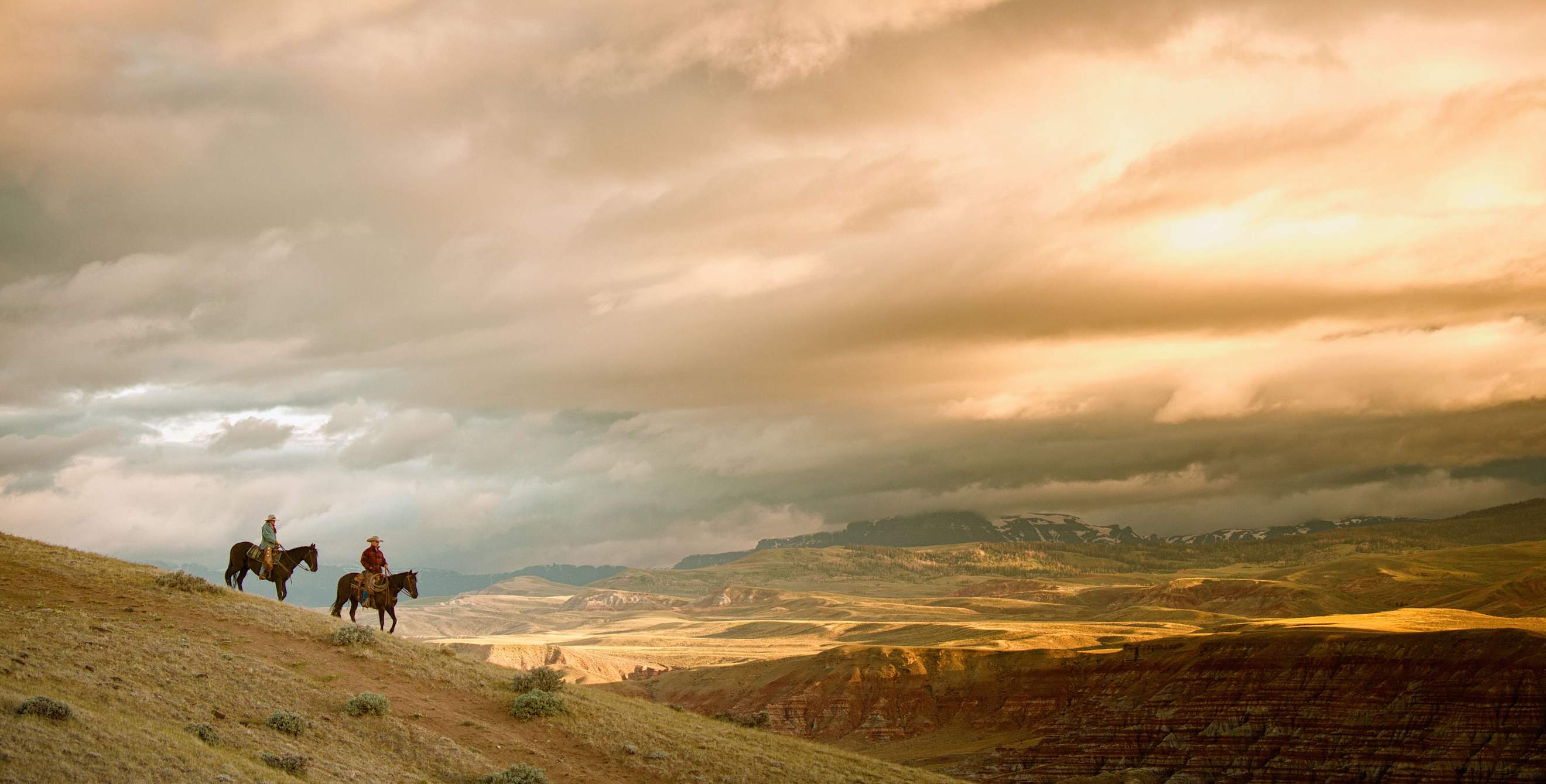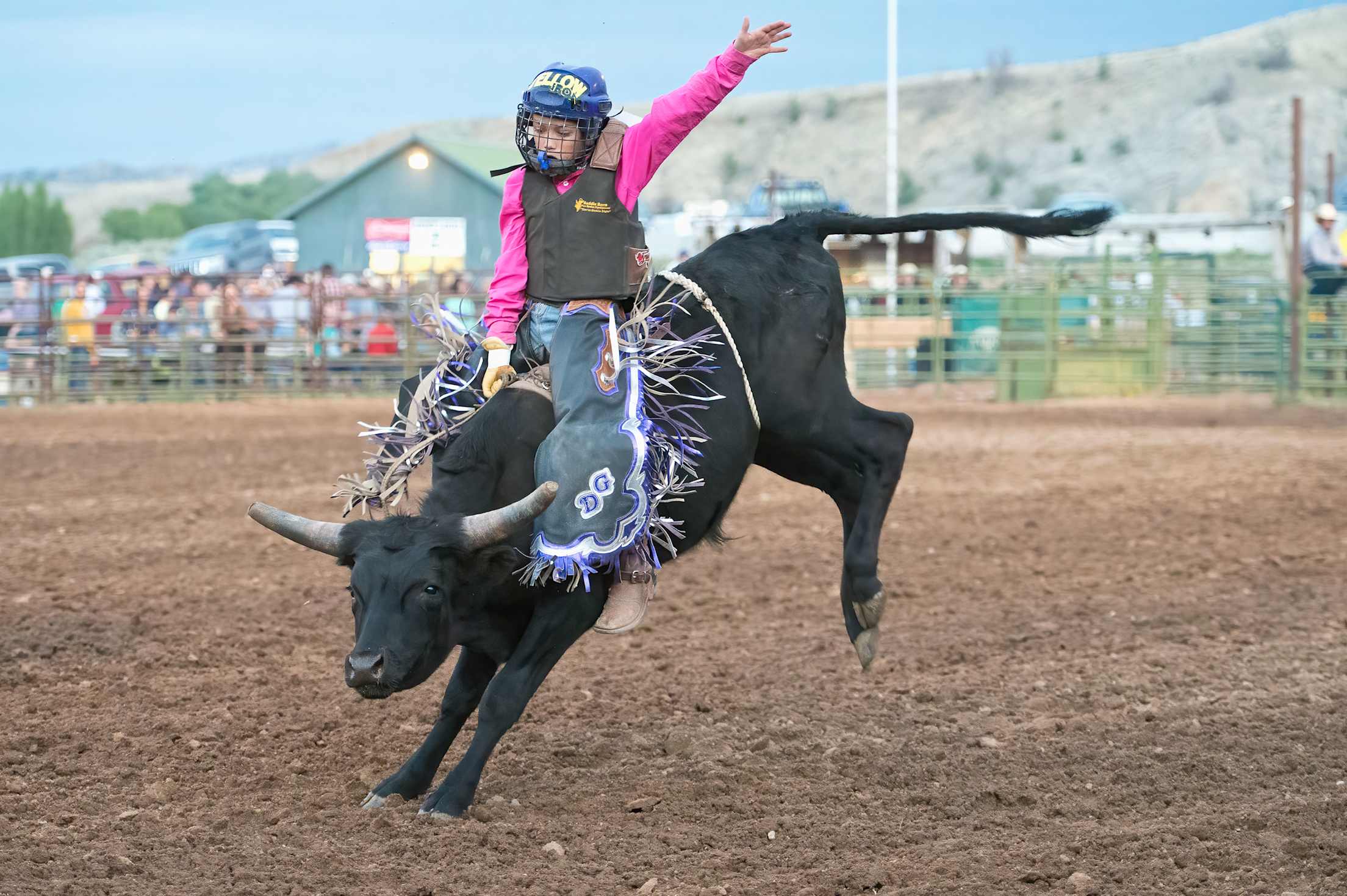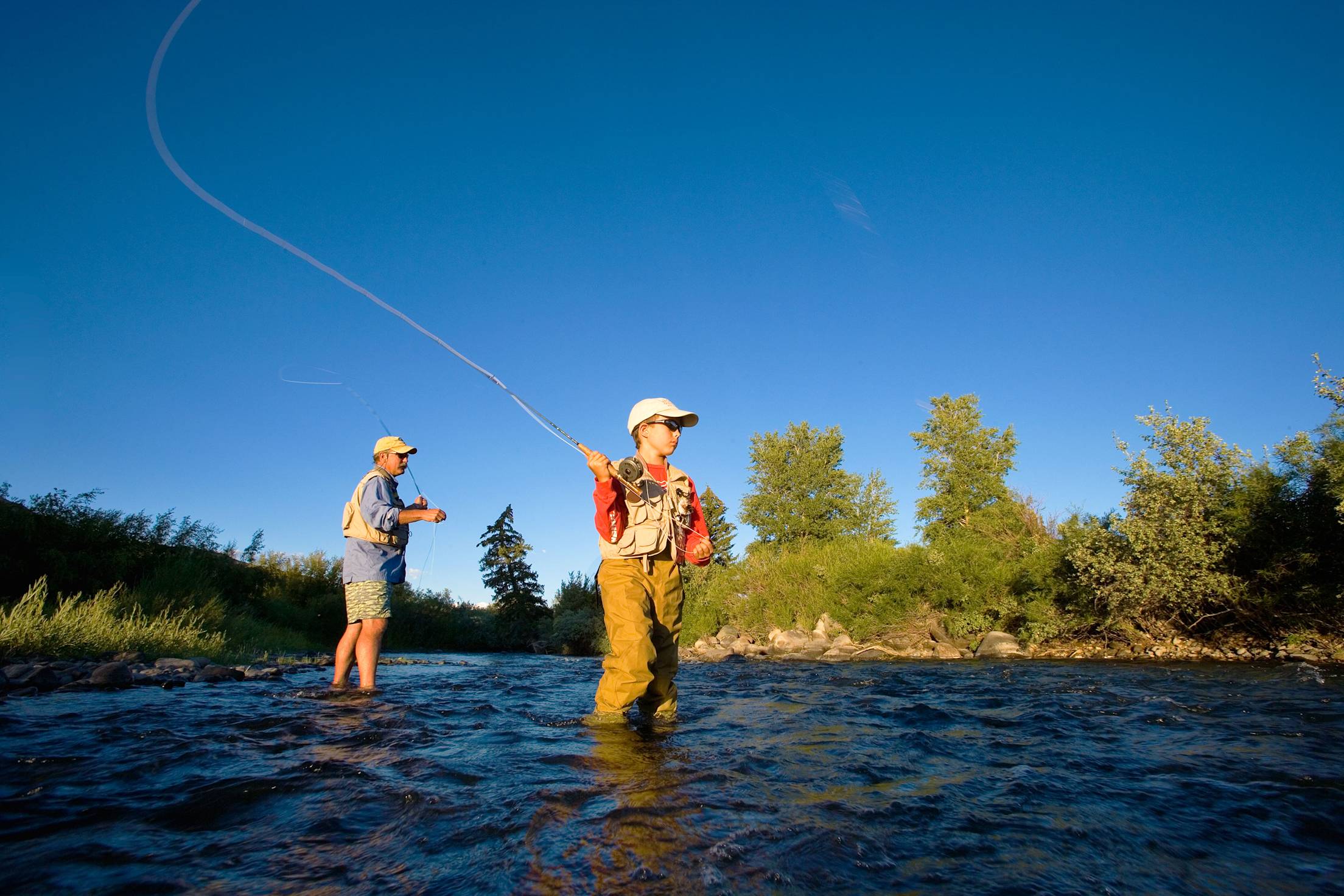
A Weekend in Dubois, Wyoming
This gateway to Yellowstone National Park is a destination on its own.

Experience cowboy culture, American Indian history, hiking, fly-fishing, and community in Dubois, Wyoming, a town of less than 1,000 people a 90-minute drive from Yellowstone’s southern entrance. (This entrance has reopened since June’s floods, which washed out sections of road in the northern part of the park.) Just don’t call it do-BWAH. In cowboy French, it’s DO-boys.
Things to Do
Learn to fly-fish at Wind River Flyfitter, which offers free daily casting lessons on a patch of astroturf adjacent to its fly shop. When you’re ready to hit the water, the outfitter, founded by long-time Dubois resident Micah Furman and Eric Victoriano, a transplant from Miami, offers half- and full-day guided wading fly-fishing excursions on the nearby Wind River and the smaller creeks that flow into it. “The quality of fishing is the same if not better than on the bigger, busier rivers around Yellowstone, and it’s less intense,” Victoriano says.
Tuesday Night Square Dances have been happening in Dubois since 1948 and welcome dancers of all skill levels and ages (this year through August 16). At the start of each dance, now held in the Frontier Room at the Rustic Pine Tavern, caller Gene Bauer teaches the basic steps.

While there’s bareback riding, bull riding, and roping at the Friday Night Rodeo, the most popular event might be sheep riding, open to any kid who weighs less than 50 pounds. “They just eat it up,” says Katie Becker, one of the directors of the Dubois Rodeo Association. “As long as they’re under 50 pounds, wear a helmet—which we give them—and the parents sign a release form, any kid can try it.” All sheep riders are awarded a crisp $1 bill for their bravery.
A passion project of local Dan Stark, a former lawyer and medical industry CEO, the 140,000-square-foot National Museum of Military Vehicles is home to the country’s largest private collection of military vehicles, including a Dodge Touring Car (the first motor vehicle used in combat by the U.S., in 1916), a Bell UH-1 Iroquois “Huey” helicopter, and a M56 Scorpion tank.

Early risers should hike around the Dubois Badlands, 4,520 acres of crenellated, colorful rock formations just east of downtown. Those wanting to walk without an early wake-up call—the badlands are a morning activity because they have neither shade nor water and daytime summer temps in Dubois can reach 90 degrees—should head southwest of town to Lake Louise, in the Wind River Range, and Shoshone National Forest. On the 25-minute drive from downtown to the Trail Lake Trailhead, you’ll pass Torrey, Ring, and Trail Lakes as well as petroglyphs made by the Tukudika peoples, the valley’s original inhabitants. From the Trail Lake Trailhead, if you take a left instead of a right at the second intersection, you’ll find (in about 20 miles, including significant glacier travel) Gannett Peak, Wyoming’s tallest mountain at 13,804 feet, and it’s less than three miles (up about 800 vertical feet) to glacier-carved Lake Louise.

Where to Eat
At Nana’s Bowling and Bakery, tucked between a dollar store and Ramshorn Llamas, which rents pack llamas to hikers, hunters, and photographers, baker Crystal Magana makes fresh cinnamon rolls, which you can ask to have topped with cream cheese, maple frosting, bacon, or pecans (or all four). You can also opt for brownies, cinnamon streusel muffins, and doughnuts. If you want something more substantial, pizza and sandwiches are on offer, including a Reuben and Philly Cheesesteak, and on Wednesdays, a meatloaf sandwich.
For fine dining, the hotel restaurant 3 Spear Ranch is open for dinner to non-guests (with advance reservations). Its menu changes weekly and often features locally grown produce and wild mountain mushrooms. When the menu includes fish, thanks to chef Richard Barnes’s connections in Hawaii and Alaska, it’s on plates within 18 hours of being caught.
Josh Tousignant, one of the two brothers behind the recently opened riverfront spot 2Z’s BBQ, loves to treat customers to a free sample of Melba’s refrigerator pickles. “Most people don’t think they want a side of pickles, but then they try these,” he says. Melba’s pickles are created with a recipe inherited from one of his grandmothers. His other grandmother, Mary Ellen, is behind another side dish, beans. “They were a staple at big family parties and events,” he says. The main menu features BBQ staples—beef brisket and pulled pork—and, perhaps inspired by Dubois’s homesteader history, game sausage and giant turkey legs.
Where to Shop
If you love to hunt for treasures, check out the Opportunity Shop, a thrift store (nicknamed the “Opp Shop”) in a former service station. Wander around to its south side to explore the “free bin.”
Find whimsical souvenirs including the game Rodeo-opoly, Wyoming gourmet beef jerky, keychains carved from elk antlers, and a well-curated offering of local and regional books at Waterwheel Gifts and Books, a staple in Dubois since 1981.
Anita Thatcher started keeping sheep so she could offer her catering clients fresh lamb. “Then I needed to find something to do with the wool,” she says. Thatcher is long retired from catering, but the “something” she found to do with the wool, Wyoming Wool Works, is still going strong. The shop sells wool saddle blankets Thatcher makes herself and has a changing inventory of other wool products made by local artisans, from knit sweaters to cat beds and dryer balls.
Where to Stay
The aforementioned 3 Spear Ranch brings the dude ranch vacation into the 21st century. Stay in one of eight cabins—including a couple of homesteader cabins from the early 1900s with claw-foot tubs—and spend days hiking, horseback riding, or fly-fishing on its 1,200 acres. Recover from the day’s adventures with a soak in the ranch’s natural warm springs.
Twin Pines Lodge was built in the 1934 by Scandinavian tie hackers. (Dubois was once the country’s largest source of railroad ties; its last sawmill closed in 1988.) Today, several of Twin Pines’ rooms and cabins—seven rooms in the main lodge and 12 cabins—still have their original painted wool-panel furniture. All beds have hand-made quilts.